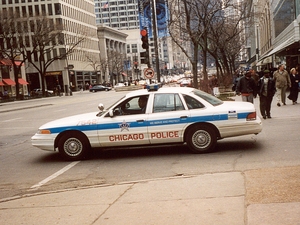Whether you’re a current resident or someone moving to the Windy City, you may be looking for information on crime rates in Chicago. From violent crimes like homicide and robbery to lesser offenses like criminal trespass and telephone harassment, there’s a bevy of data out there; the question is how you access crime rates in Chicago and pinpoint the specific numbers you want.
Many people are primarily interested in how to find neighborhood statistics to gauge the relative safety of their homes and workplaces, but whatever your motivations for studying crime rates in Chicago, the good news is that the information is at your fingertips, thanks to a combination of Chicago Police Department resources and the innovative folks at ChicagoCrime.org, a nonprofit entity with a free, searchable database.
Crime Rates in Chicago: Locating your District
Like other major cities, Chicago is broken up into districts, all with commanders who oversee policing in their particular zones. Chicago has 25 of these districts, each of which is divided into sectors and subdivided into beats. While each district has a name, it may or may not correspond to the popular term for the area. For example, the community area commonly known as Logan Square is primarily (though not entirely) located within Chicago Police District 14, or “Shakespeare.”
Crime Rates in Chicago: Locating your Beat
The beat, which is the smallest segment within a district, is identified by a four-digit number. The first two digits correspond to the district, the third digit corresponds to the sector, and the fourth digit identifies the specific beat within those bounds. Beat 1414, part of the Logan Square neighborhood, is located in District 14. This beat is in the first sector, and it’s the fourth beat within that zone – a rectangle bounded by Logan (N) and Armitage (S) and California (E) and Kedzie (W).
To identify your beat number, go to the Police Department homepage: http://www.cityofchicago.gov/police and use those “find your district” tool. Then, pinpoint your beat within your district by looking through the maps. This will help you find the data for the area immediately around your residence (or business, if that’s what you’re studying).
Crime Rates in Chicago: Citizen I-Cam
The Chicago Police Department does make crime data available to the public through its Citizen I-Cam website (http://12.17.79.6/), and users can look up crime rates in Chicago here by beat, address, and a couple other methods. However, the search functionalities are rather limited and the interface is not as user-friendly as the one provided by the far more elaborate ChicagoCrime.org.
Crime Rates in Chicago: Using ChicagoCrime.org
ChicagoCrime.org is a nonprofit organization that, although not affiliated with the CPD, uses police statistics from the Citizen I-Cam along with Google maps (arguably the best free map interface around) to make the volumes of data on crime rates in Chicago more easily accessible. Their interface is sophisticated yet simple, allowing people to sort through months of crime statistics in myriad ways.
Just as with Citizen I-Cam, you can search for crimes by police district and beat to get a list and a map (updated on a weekly basis) of every reported crime – with basic details about time of day and the nature of the incident. But the real bonus of this website lies in its other options, including the route feature. This practical tool allows users to draw lines on a map to simulate a route that they or their loved ones may take – maybe to and from school, the store, or public transportation. Whatever the case, after the user selects the kinds of crimes to display and a date range, the map will populate with markers which can be hovered over for details.
Another excellent feature of ChicagoCrime.org is the location tool, which groups crime data by the type of location and not just geography. Instead of simply using an address or beat, this feature classifies the types of locations in which crimes occur and makes the data available that way too. For example: ATMs, gas stations, college campuses, CTA trains, CTA buses, transit stations, residences, grocery stores, city streets, parks, restaurants, schools – the list goes on and on. If you wanted to know how safe your local transit stop is, for example, or whether the neighborhood convenience store is frequently the target of robbery, you can zero in on the appropriate crime rates in Chicago.
Crime Rates in Chicago: Final Thoughts
I can only laud the creators of ChicagoCrime.org for creating such a neatly organized tool with the crime statistics made available by the Chicago Police Department. Information is only as good as our access to it, and the site’s creator, Adrian Holovaty, deserves praise for such a deft idea.





